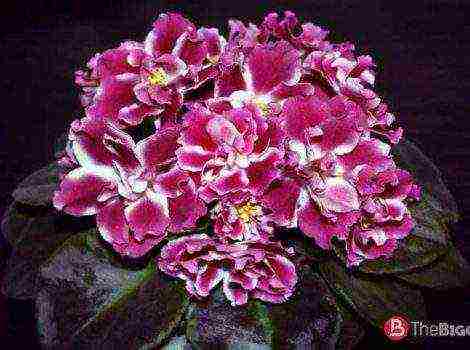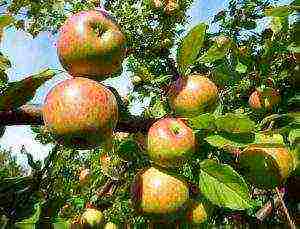Content
Cheeses are popular in varying degrees in all countries of the world. The variety of varieties of this fermented milk product is truly amazing. In France alone, and in this country there is a real cult of cheese, there are more than 500 varieties of cheese! Hard and soft, spicy and sweet, blue cheeses and cheeses with holes, they are all prepared differently, but there are some of the most popular and beloved varieties bought all over the world. We will talk about them today.
The best cheeses in the world
Of course, tastes differ. Someone adores cheese, and someone is completely indifferent to it, but among such a variety of varieties, everyone will surely find something that they really like. In addition, it is important to know with which wine or sauce it is better to combine this or that cheese. This product is the best appetizer for wine, the French know a lot about wines and cheeses, and their most popular appetizer for wine is just cheese platter.
1. Parmesan. Everyone has heard about this Italian cheese, but not everyone has tried or even seen it on the counter. It is the hardest cheese in the world and matures between 12 and 36 months. To obtain one kilogram of Parmesan, as much as 16 liters of milk are required, but thanks to the unique Italian technology, the output is a unique cheese with a deep aroma and hints of hazelnut. A finished head of cheese sometimes weighs up to 40 kilograms, so cheese is always sold in stores already packaged. When slicing, cheese very often crumbles - it is so hard.
2. Mozzarella.This Italian young cheese is also popular with many. Traditionally, this cheese is made from the milk of young buffaloes, but in recent years, specimens from cow's milk have begun to appear. Mozzarella cheese is difficult to confuse with any other, as it is sold in the form of white cheese balls soaked in brine. This cheese is very delicate in taste, it is actively used in the preparation of salads, pizza, lasagna, etc.
3. Maskrapone.And again, the cheese comes from Italy. Mascarpone is an Italian cream cheese, more like cream or soft butter in appearance and consistency. It is this cheese that is often used in the preparation of desserts such as tiramisu. It is very greasy and is often smeared on sandwiches instead of butter.
4. Cambotsola.But this is already German cheese. It is a moldy cow cheese that combines features of two cheeses: Gorgonzola and Camembert. Cambotsola is a soft cheese with a distinctive aroma and rich taste.
5. Bree.One of the most famous and ancient French cheeses. This soft cow's milk cheese with a moldy crust used to decorate the dining table of French kings, so Brie cheese was already appreciated in the Middle Ages. This cheese has always had many admirers and is really worth trying at least once in your life. Could it be love? Brie is a soft and very tasty cheese with a slight smell of ammonia. The older the Brie cheese, the spicier it is. Its aroma is quite specific, you need to get used to it.
6. Dorblu.German blue cheese, in other words - blue cheese. Contrary to the common misconception, not every blue cheese is Dorblu cheese, but in the vastness of the post-Soviet space, this mistake is very common. Dorblu is a dense and crumbly light cream cheese with bluish veins. It goes well with nuts, fruits and dry red wine.
7. Camembert.French soft fat white cheese with a delicate mushroom taste and unsurpassed aroma. Made from cow's milk.It is difficult to confuse it with any other cheese, since on the outside it is covered with a white, moldy fluffy crust, and on the inside it is soft. Today this cheese is very popular both in France and abroad.
8. Gorgonzola. A bittersweet blue Italian cheese, originally from Italy, ripens in 2-4 months. When this cheese is cut, green stripes are clearly visible on the cut. This cheese is often positioned as a dessert cheese. It goes well with red wines.
9. Roquefort.World famous blue French cheese, previously made exclusively from sheep's milk. Today it is also made from cow's milk and is highly valued all over the world, including in Russia. Top of this cheese is covered with a white shiny and slightly damp crust. Roquefort is distinguished by a bright taste of hazelnuts with a complex spicy aroma.
10. Tete de Moine.Semi-hard Swiss cheese made from cow's milk. Its name can be literally translated as "Monk's head". And the name contains the history of the origin of this cheese, because this cheese is a monastery. It was created 800 years ago in the Belle Monastery and even served as a monetary equivalent. The traditional recipe for making this amazing cheese has not changed for several centuries. It is also not customary to cut it, but only to scrape it off. Tête de Moine goes well with dry white wine.
11. Cabrales.Semi-hard Spanish blue cheese, made in unique conditions, namely in the caves around Cabrales. It goes well with young red wine.
12. Cheddar.Cheddar is a cheese loved by chefs from all over the world. This is a bright English hard cheese made from whole milk with a nutty, slightly spicy and sour flavor.
13. Gruyeres. Hard Swiss cheese of yellow color with a pungent spicy aroma and nutty taste. Depending on the ripening time, Gruyère tastes differently. Young Gruyère is called “soft” and matures within 5 months, “semi-salty” Gruyère matures for 8 months, “salty” - 10 months, “premium” - more than a year, “old” - from 15 months.
14. Conte. The famous semi-hard French cheese, made exclusively from the milk of the following breeds of cows - Simmental and Montbéliard. This cheese ripens within 8-12 months. Conte cheese is distinguished by a pronounced sweetish nutty taste, but each cheese head has its own unique flavor. This is due to the different manufacturing conditions as well as the seasons. In total, there are 90 shades of Conte cheese, and 6 main tastes: fruit, milk, roasted, spicy, herbal and animal. This cheese is one of the most loved in France, it is served both as a separate dish at the end of a meal, and as an ingredient in other dishes. Conte cheese goes well with any wines.
15. Emmental. Semi-hard cheese originally from Switzerland. It is distinguished by a spicy, spicy-sweet taste, large cavities inside the head of cheese (holes). This cheese is freely produced in many countries around the world, so if you see a cheese with this name in a store, it does not mean that it was brought from Switzerland.
Have you ever tried any cheese from the list above, and did you like it?
You may also be interested in
There are many such dishes and products in the world that are worth trying so as not to feel that life has been lived in vain. Cheese is a separate category for gourmets. There are countless cheeses, but it is generally accepted that 10 of the most delicious were chosen from them, which are produced in different parts of the world.

Mascarpone is an Italian cream cheese with a rich flavor similar to cream and yogurt. 100 g contains an average of 453 Kcal.
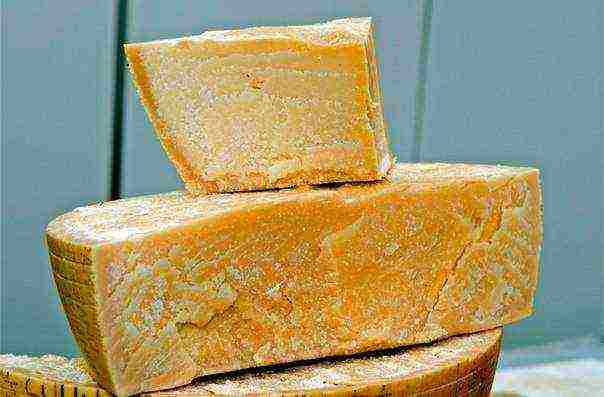
Parmesan is hard, brittle, pungent in taste. It needs to be cut into the finest slices, and there is - with pears and walnuts. Parmesan is added to pasta, risotto, omelettes. 100 g contains an average of 392 Kcal.

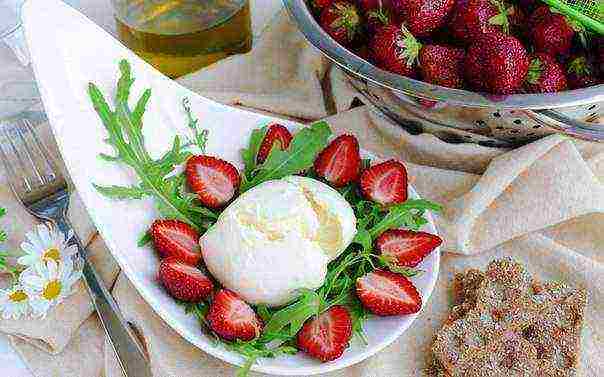
Mozzarella is a cheese made from buffalo milk.This cheese goes well with tomatoes, basil and olive oil. You can add some more black pepper. 100 g contains on average 250 Kcal.
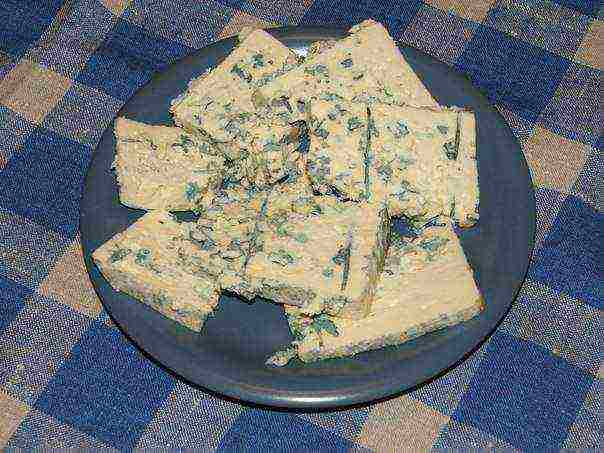
Dor Blue is a German blue cheese. It is best eaten with nuts and grapes. If you eat several types of cheese at the same time, this variety is best left for last. 100 g contains an average of 354 Kcal.
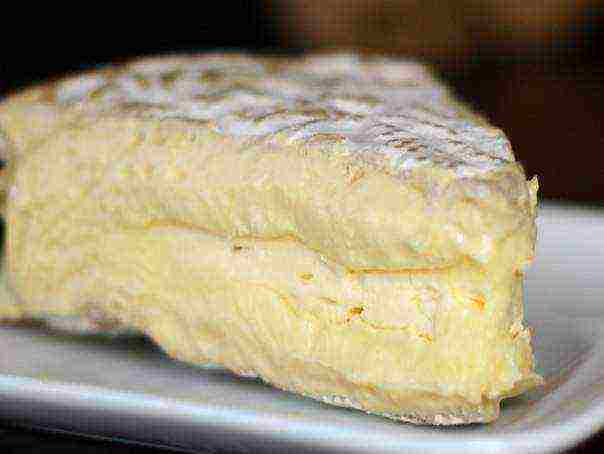
Brie is an old French cheese. Cheese of the kings. Its taste, depending on the variety and timing of ripening, varies from mushroom to fruity. Fruit and brie are the best combination. 100 g contains on average about 330 Kcal.
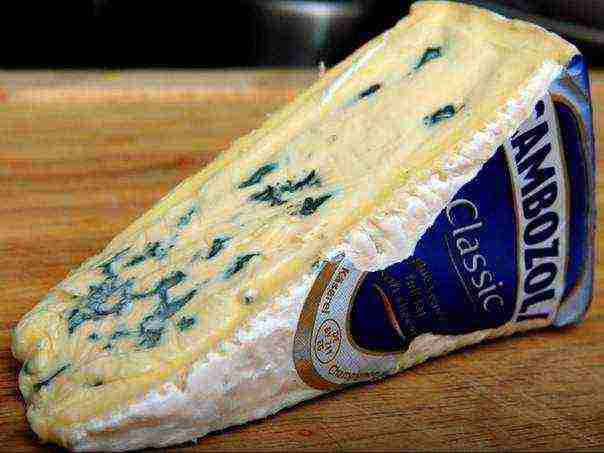
Cambozola is a German moldy cow cheese whose producers have managed to combine the features of French soft cheeses and Italian Gorgortsola. Vku is similar to Camembert, however, due to mold inclusions, it is more intense and sharp. It is better to serve fruit (for example, melon, grapes or pear) with this cheese. To fully understand the delicate taste of Cambazola cheese, you need to let its aroma fully unfold. To do this, put the cheese on a plate one hour before serving. 100 g contains on average 427 Kcal.
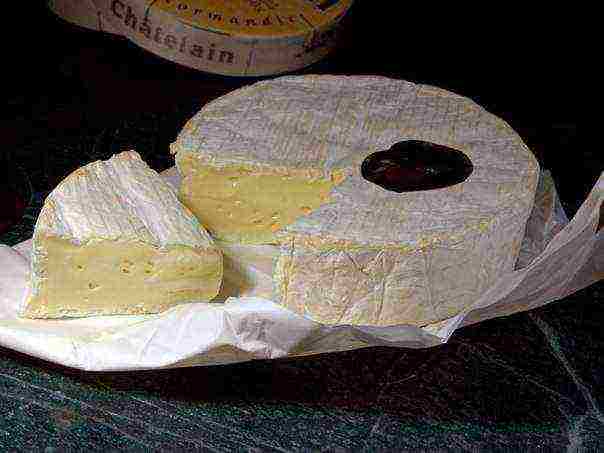
Camembert is a soft cheese made from cow's milk. Brie and Camembert are similar, but brie is slightly less greasy. An average of 100 g contains about 300 Kcal.

Tete de Moine - refers to the exclusive Swiss cheeses. Translated from French, its name means "monk's head". Tête de Moine is made from cow's milk, obtained exclusively during the summer months. Ripens more than three months. The finished cheese is homogeneous on the cut and has a dense texture. It has a very strong aroma and a pronounced pungent taste. Good with white wines. 100 g contains an average of 410 Kcal.

Roquefort is the famous French blue cheese. Roquefort goes well with wines: Cahors, Sauternes, Porto. 100 g contains an average of 335 Kcal.
Related links:
Many people love cheese and have probably tried different varieties of it. And which of them are the most demanded among consumers?

Roquefort cheese
This cheese is classified as a "blue" variety and is produced in France. It was originally made from sheep milk, but today cow's milk is used. First, the milk is subjected to the kvask process, after which the resulting mass is laid out in special forms and salted.
The peculiarity of "Roquefort" is that for maturation it is placed on oak shelves, which are located in limestone grottoes. At the same time, it is very important to observe the correct ventilation of these grottoes.
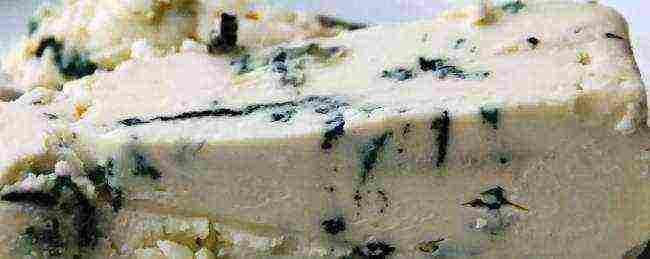
Gorgonzola cheese
This cheese comes from a temperamental country - Italy. It is also classified as a "blue" variety with the presence of mold. Gorgonzola has a spicy, slightly spicy and tart taste.
Made using cow's milk. Special enzymes and "penicilla" mushrooms are added to the cheese, which are introduced through syringes. Throughout the period allotted for ripening (7-17 weeks), metal rods are present in the cheese, providing the flow of oxygen, which is necessary to maintain the vital activity of the mushrooms.
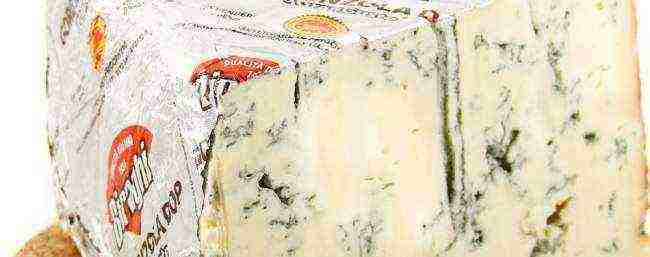
Camembert cheese
This cheese has a delicate mushroom flavor and a crispy white mold. Prepared from whole milk, produced in France. To curl the cheese, special enzymes are used - rennet. In the process of curdling, the curd mass needs to be systematically mixed. After that, it is dried by a certain method, placing it in special molds. And the final step is salting. Then the cheese is left to ripen under special conditions.
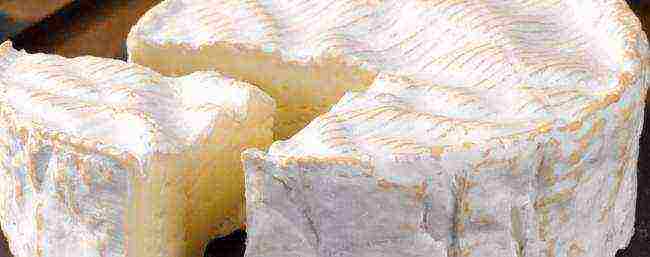
Parmesan cheese
It is believed that the recipe for this type of cheese was presented to the world by ancient monks who lived in the 11th century. Parmesan has a very hard consistency. When cutting, it is impossible to form even pieces or plates, the cheese will break off and crumble. Parmesan is famous for its delicate taste, which is moderately salty and spicy.
As for the technology of its preparation, it is very complex, and the ripening process is long (1-3 years). The longer the ripening period, the more pronounced the nutty flavor in the cheese. To get 1 kg of the finished product, you need to use about 16 liters of milk.
It is interesting!
There are craftsmen in Italy - Parmesan cheese tasters. They know how to determine the "age" of a cheese by means of special hammers made of silver. These tools are called "rumors".
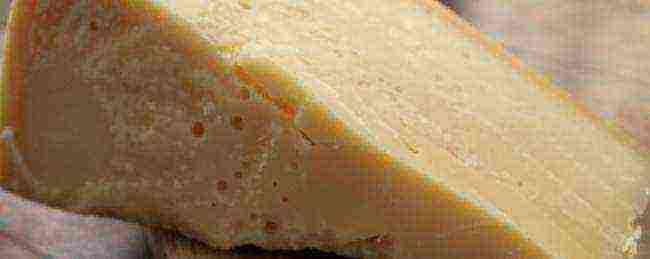
Mascrapone cheese
The homeland of Mascarpone is Italy. This cheese has a soft consistency and looks more like yogurt or curd cheese. Its taste is a little sweet and incredibly delicate. To prepare the product, cream is heated in a water bath, the fat percentage of which is at least 25%. The heating process lasts until the temperature of the cream reaches +80? С. After that, tartaric acid is added to the cream (sometimes it is replaced with wine vinegar) and lemon juice. These additives allow the milk protein to curdle.
Then the mass is cooled and placed in special mesh trays. This allows the whey to be removed from the mass. Mascarpone is far from a dietary product, but it has an exquisite taste. Various desserts are prepared from this type of cheese, one of which is very popular all over the world. Of course it's tiramisu!
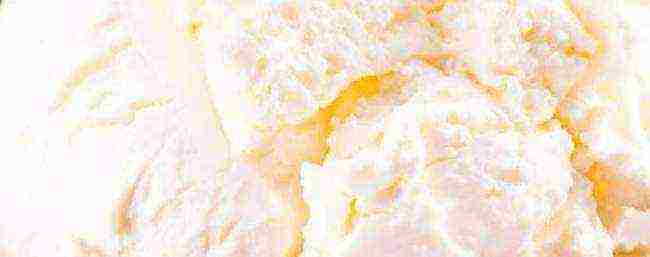
Cheese "Tete de Moine"
The monks were the first to cook this cheese. Translated, its name sounds like "the head of a monk." The homeland of Tête de Muan is Switzerland. It should be noted that this type of cheese is exclusive and not cheap. For its production, fresh cow's milk is required exclusively for summer milk yield. Tête de Moines matures for 10-12 weeks, being on spruce boards, arranged in the form of racks in a damp cellar. The ripening process requires periodic spraying of the cheese with a saline solution containing live bacteria. The flesh of the finished product has a golden color, the crust is brown. The consistency of Tête de Muan is moderately dense.
Dor Blue cheese
The birthplace of cheese is Germany. Refers to blue mold varieties. For many years, Dor Blue was the only one of its kind on the market. The recipe for its preparation was created especially for lovers of cheeses with a spicy taste.
Until today, cheese makers do not elaborate on the details of the preparation of this cheese. But general information has nevertheless become a national property - it is prepared in cow's milk using a special type of mold. Gourmets are sure that Dor Blue is most successfully combined with all varieties of nuts and grapes. If there are several types of cheese on the table from the appetizers, one of which is Dor Blue, it is advisable to eat it as a dessert, and not as a main snack.
Mozzarella cheese"
This cheese comes from Italy. According to a long tradition, it is made from buffalo milk, but today you can find Mozzarella on sale, made from the usual cow's milk. This cheese consists of small balls that are placed in a special brine.
Mozzarella has a delicate taste and soft texture. For preparation, milk is first fermented using a special culture - lactic acid, thermophilic. Due to the presence of rennet, milk curdles. Then the mixture is heated and the whey is separated. Then the mass is kneaded until smooth, periodically dipping in boiling water, until a viscous mixture is obtained. At the end, various shapes are formed from the finished product - pigtails, cubes, balls. The product is placed in a weak solution, where it is stored permanently. By the way, the shelf life of this type of cheese is short, so it is better to eat it within a few days after purchase. Mozzarella is most successfully combined with vegetable salads.
Cheese "Cambotsola"
This is a German type of mold cheese. Only professional cheese makers can make it. Cambozolla combines the qualities of two cheeses - Camembert and Gorgonzola.Hence the name. In its manufacture, specially prepared molds are used. Soft texture and delicate taste are achieved by adding cream to the composition. Experts recommend eating this cheese an hour after cutting, as its taste will fully unfold. Best consumed in combination with fruit.
Brie cheese
Bree is from France. It has an exquisite aroma and piquant taste. It is made on the basis of cow's milk. Previously, this cheese was available only to wealthy people, but today everyone can afford it. Brie goes on sale in the form of small cakes, the thickness of which varies from 3 to 6 cm.
The surface of the cheese is covered with white noble molds. The aroma of Brie has ammonia notes. Consistency similar to processed cheese. The taste depends on the duration of its aging and can be pronounced mushroom or fruity. Brie is a versatile cheese that goes well with a variety of foods and beverages. Serving Brie is advisable when it is not chilled.

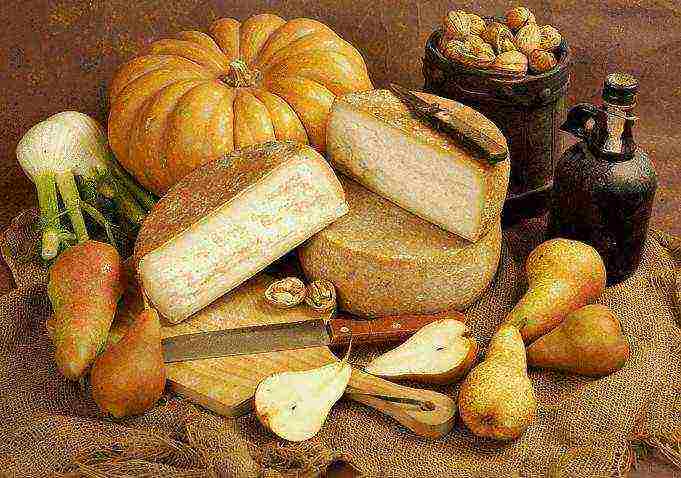
# 1. Parmesan is hard, brittle, pungent in taste. It needs to be cut into the finest slices, and there is - with pears and walnuts. Parmesan is added to pasta, risotto, omelettes. 100 g contains an average of 392 Kcal.
No. 2. Brie is an old French cheese. Cheese of the kings. Its taste, depending on the variety and timing of ripening, varies from mushroom to fruity. Fruit and brie are the best combination. 100 g contains on average about 330 Kcal.
No. 3. Cambozola is a German moldy cow cheese whose producers have managed to combine the features of French soft cheeses and Italian Gorgortsola. Vku is similar to Camembert, however, due to mold inclusions, it is more intense and sharp. It is better to serve fruit (for example, melon, grapes or pear) with this cheese. To fully understand the delicate taste of Cambazola cheese, you need to let its aroma fully unfold. To do this, put the cheese on a plate one hour before serving. 100 g contains on average 427 Kcal.
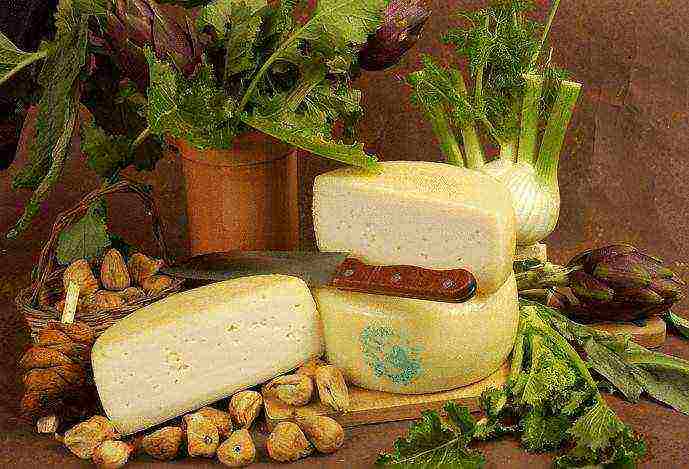
No. 4. Mascarpone is an Italian cream cheese with a rich flavor similar to cream and yogurt. 100 g contains an average of 453 Kcal.
No. 5. Camembert is a soft cheese made from cow's milk. Brie and Camembert are similar, but brie is slightly less greasy. An average of 100 g contains about 300 Kcal.
No. 6. Dor Blue is a German blue cheese. It is best eaten with nuts and grapes. If you eat several types of cheese at the same time, this variety is best left for last. 100 g contains an average of 354 Kcal.
No. 7. Gorgonzola is one of the most famous Italian cheeses with a characteristic spicy taste. This cheese has a sweetish flavor, with a delicate and light nutty aroma. An average of 100 g contains about 358 Kcal.
No. 8. Mozzarella is a cheese made from buffalo milk. This cheese goes well with tomatoes, basil and olive oil. You can add some more black pepper. 100 g contains on average 250 Kcal.
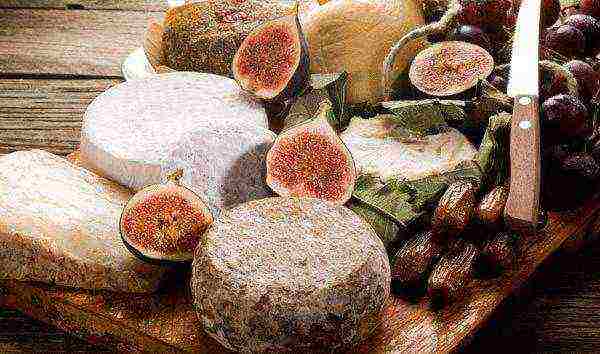
No. 9 Roquefort - the famous French blue cheese. Roquefort goes well with wines: Cahors, Sauternes, Porto. 100 g contains an average of 335 Kcal.
No. 10. Tete de Moine - refers to the exclusive Swiss cheeses. Translated from French, its name means "monk's head". Tête de Moine is made from cow's milk, obtained exclusively during the summer months. Ripens more than three months. The finished cheese is homogeneous on the cut and has a dense texture. It has a very strong aroma and a pronounced pungent taste. Good with white wines. 100 g contains an average of 410 Kcal.
published
